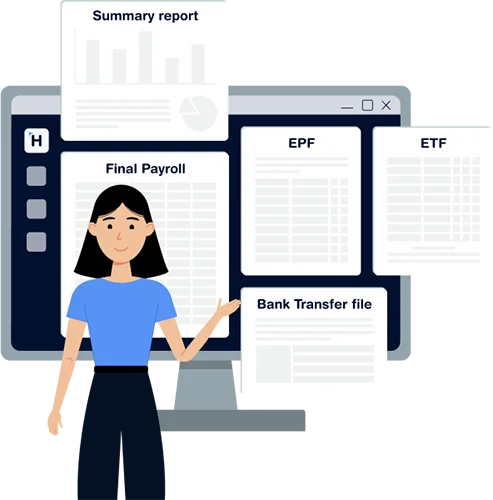For small and medium-sized enterprises (SMEs) in Sri Lanka, keeping up with evolving tax regulations can be overwhelming. Whether it’s adjusting to updated APIT brackets, new EPF/ETF limits, or additional employer obligations, the burden of staying compliant often falls on business owners or HR teams who already wear many hats.
In this environment, a modern HRIS (Human Resource Information System) can play a critical role, not just in managing people and payroll, but in making sure your business stays compliant with changing tax rules. Instead of manually tracking rate updates and changing calculations in spreadsheets, a well-designed HRIS system does the heavy lifting for you.
The Challenge of Staying Updated
Sri Lanka’s payroll and tax regulations are not static. Adjustments to APIT thresholds, deductions, and contribution rates can happen annually or even more frequently. For SMEs that rely on manual systems or outdated software, keeping up with these changes requires:
- Monitoring government circulars and notices
- Manually updating spreadsheets or basic payroll tools
- Rechecking each employee’s tax eligibility and contribution rate
- Correcting miscalculations after errors have been found
This reactive approach not only takes time but increases the risk of penalties, incorrect deductions, or unhappy employees.
How HRIS Systems Keep You One Step Ahead
A robust HRIS system is built with compliance in mind. Here’s how it helps SMEs manage tax changes seamlessly:
Built-In Tax Table Management
Modern HR software is designed to reflect the latest government-mandated tax rates. When changes to APIT, EPF, or ETF contributions occur, the software provider can push system updates that automatically apply the new rates. This removes the need for users to adjust calculations manually, ensuring accuracy and consistency across the payroll process.
Automatic Adjustments to Deductions
When a tax update occurs such as an employee crossing into a higher APIT bracket, the system recalculates the new deduction automatically based on the employee’s income and applicable rates. This helps prevent under-deductions or over-deductions that could later result in financial penalties or the need to issue refunds.
Integrated with Payroll and Reporting
Since your payroll, employee data, and deduction calculations all live within one HRIS system, tax table updates immediately reflect across payslips, payroll summaries, and statutory reports. This ensures consistency from salary calculations to the generation of compliance reports like the T10 or Annual Statement of Employer.
Reduced Human Error
Manual entry errors are among the top causes of non-compliance. When systems rely on individuals to input or update tax values across multiple files, even a small mistake can compound over time. HRIS software reduces this risk by managing rates centrally and applying them consistently.
Peace of Mind for Business Owners
One of the most valuable benefits of a tax-compliant HRIS system is peace of mind. For SMEs that don’t have a full-time HR or finance department, knowing that the system is up to date with Sri Lanka’s latest tax requirements can remove a significant source of stress.
You don’t need to worry about whether your latest batch of payslips reflects the right APIT deduction or whether your EPF contributions are calculated correctly, the system handles it for you. And if there’s ever an audit or labour inspection, your records are ready and in order.
Looking Beyond Payroll
While tax compliance is a critical function, HRIS systems also support broader business goals. When your HR and payroll operations are compliant by default, your team can focus on more strategic efforts like improving team retention, refining policies, or planning for growth.
In the long run, automating compliance tasks not only protects your business legally but also frees up time and energy to build a better workplace.
A Smarter Way to Stay Compliant
Compliance doesn’t need to be a complex, manual process. With the right HRIS system, Sri Lankan SMEs can stay ahead of tax updates, reduce errors, and run payroll confidently, knowing that they’re meeting their obligations without added burden. For businesses growing in size or complexity, this kind of automation becomes less of a luxury and more of a necessity.



